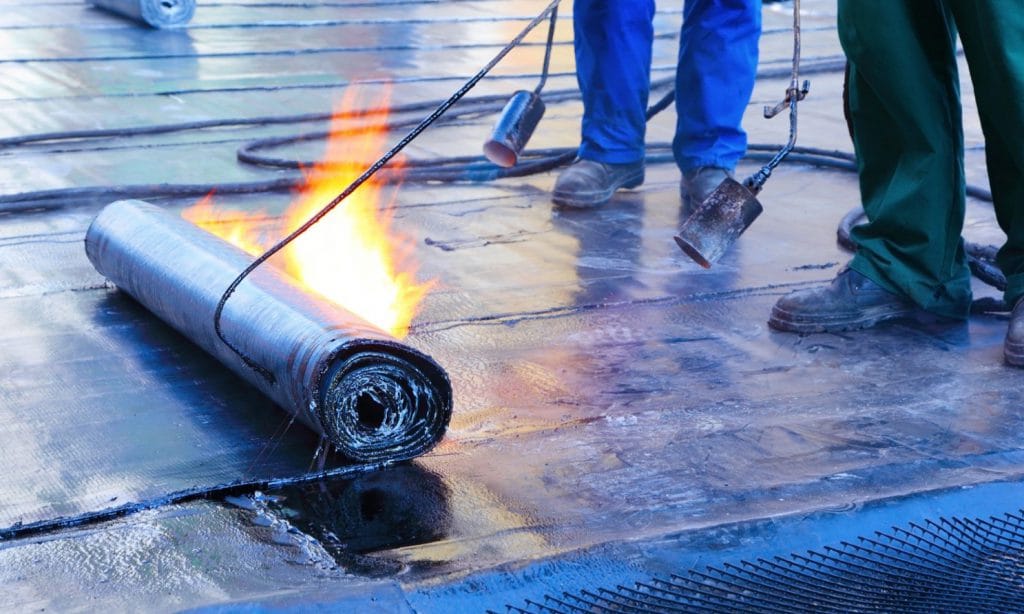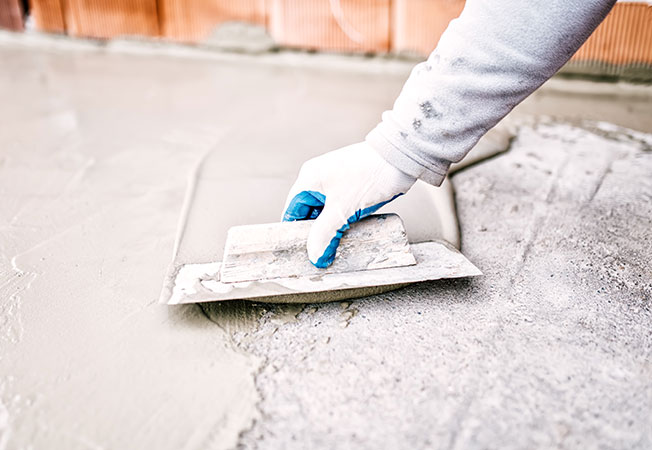How Yard drainage Omaha Boosts Property Value Instantly
How Waterproofing Functions: A Thorough Take A Look At Strategies and Technologies
Waterproofing is crucial for securing structures from moisture-related damage. It involves various strategies and technologies that create barriers against water intrusion. Typical techniques, such as compressed clay, coexist with modern advancements like liquid-applied membranes. Recognizing the nuances of these strategies is vital for efficient application. The efficiency of any kind of waterproofing service pivots not just on the strategies utilized but also on ongoing maintenance and evaluation. What are the crucial elements that affect long-term efficiency?
Comprehending the Fundamentals of Waterproofing
Waterproofing is an essential procedure that shields frameworks from water breach, which can cause substantial damages with time. This method includes the application of numerous products and strategies designed to develop a barrier versus moisture. The key goal is to avoid water from passing through surface areas, which can create deterioration, mold and mildew development, and architectural instability.Various variables influence the choice of waterproofing technique, consisting of the type of framework, its area, and environmental problems. Recognizing the physics of water motion and the residential properties of different products is critical in picking an effective waterproofing solution.Effective waterproofing not just safeguards buildings yet also enhances their longevity and integrity. Typically, it is integrated right into the style stage of building to assure extensive protection. As recognition of water-related issues grows, the significance of comprehending waterproofing fundamentals ends up being progressively clear to designers, building contractors, and residential property owners alike.
Conventional Waterproofing Approaches
Traditional waterproofing approaches have been made use of for centuries, counting on tried and true techniques and materials to protect frameworks from water damage. One of the oldest techniques involves using clay, which, when compressed, develops an all-natural barrier versus dampness. Additionally, asphalt, a sticky, black product originated from petroleum, has been used for its water-resistant residential properties, usually used to roofings and foundations.Another strategy entails the application of lime-based plasters, which offer a breathable layer that enables moisture to escape while avoiding water ingress. Thatch roof, a standard approach still seen in some societies, supplies exceptional waterproofing because of its tightly packed straw layers.Moreover, the use of rock and brick has actually been famous, as these products are naturally immune to water when correctly installed. In general, traditional waterproofing methods highlight the relevance of picking appropriate materials and building methods to enhance durability against water invasion.
Modern Waterproofing Technologies
Improvements in modern-day waterproofing modern technologies have revolutionized the method frameworks are safeguarded from water damages. Ingenious strategies such as liquid-applied membranes and innovative sealants have improved the effectiveness and convenience of waterproofing options. These technologies enable seamless application, minimizing the danger of leaks and making certain detailed coverage over complicated surfaces.Moreover, the assimilation of smart innovations, such as wetness sensing units and automated monitoring systems, allows real-time assessment of waterproofing performance. This positive method promotes timely upkeep and decreases lasting fixing costs.Additionally, innovations in spray-applied layers use fast application and exceptional adhesion, adjusting to different substrates while giving robust security. Methods like polymer-modified systems further boost adaptability and resilience, making them appropriate for varied atmospheres. In general, modern waterproofing innovations not only minimize water invasion but likewise add to the long life and sustainability of structures, noting a substantial change in the industry.
Materials Used in Waterproofing
The effectiveness of waterproofing options heavily counts on the materials utilized in their application. Different materials are utilized to create barriers against water ingress, each with distinct properties matched for different atmospheres. Generally made use of materials include membrane layers, finishes, and sealants.Liquid-applied membranes, often made from polyurethane or acrylic, create a smooth barrier that adjusts to intricate surfaces. Sheet membranes, typically constructed from rubber or polycarbonate, deal durability and are excellent for bigger areas. Furthermore, cementitious waterproofing materials, composed of cementitious compounds, offer excellent bond and flexibility.Sealants made from silicone or polyurethane are vital for joints and seams, making certain extensive defense. Moreover, sophisticated materials, such as geo-composite membrane layers, integrate several features, enhancing performance. On the whole, the option of waterproofing products is essential in accomplishing long-lasting and effective water resistance, customized to specific project needs and ecological conditions.
Usual Applications of Waterproofing
Waterproofing plays a crucial duty in different markets, guaranteeing the long life and honesty of structures. Typical applications consist of property remedies that shield homes, business infrastructure that click for more info safeguards businesses, and industrial setups that require robust defense against dampness. Recognizing these applications highlights the relevance of waterproofing in keeping both safety and security and functionality throughout various settings.
Residential Waterproofing Solutions
Several homeowners face difficulties with wetness breach, making effective property waterproofing solutions essential. Various methods exist to resolve this issue, including interior and exterior waterproofing systems. Interior services commonly include the application of sealants and layers to cellar walls, which aid protect against water seepage. Outside methods commonly include the installment of drain systems and water resistant membrane layers that draw away water far from the foundation.Additionally, homeowners may think about sump pumps to remove water accumulation and dehumidifiers to control moisture degrees. Correct grading and the use of rain gutters also play an important duty in taking care of water circulation around the home. By implementing these approaches, property owners can significantly minimize the risk of water damages and mold growth, making certain a completely dry and safe living atmosphere.

Industrial Framework Protection
Reliable waterproofing services play an important duty in the defense of commercial framework. Drainage & waterproofing company Omaha. These methods are essential for guarding structures, auto parking frameworks, and bridges from water damage, which can endanger structural stability and cause pricey fixings. Usual applications consist of the installment of membrane layers, finishings, and sealers that produce obstacles versus wetness infiltration. Locations such as cellars, roof coverings, and outside wall surfaces are typically focused on to ensure durability and longevity. Furthermore, waterproofing systems can boost power performance by preventing water-related issues that might cause mold and mildew development and deterioration. By carrying out robust waterproofing steps, homeowner can safeguard their investments and preserve functional effectiveness, ultimately adding to the overall sustainability of commercial centers
Industrial Applications Summary
While different sectors deal with one-of-a-kind obstacles, the need for trusted waterproofing remedies continues to be a consistent in commercial applications. Industries such as manufacturing, building and construction, and energy often experience settings where moisture exposure can jeopardize architectural integrity and functional efficiency. In producing centers, waterproofing is essential for securing machinery and products from water damage. In building and construction, it safeguards foundations and basements versus groundwater infiltration. The energy industry relies upon waterproofing for the security of equipment in hydroelectric plants and offshore structures. Furthermore, food handling industries utilize waterproofing to guarantee hygiene and compliance with safety and security requirements. In general, effective waterproofing options are necessary for improving durability, safety, and productivity throughout different industrial settings.
Upkeep and Longevity of Waterproofing Solutions
Waterproofing services are developed to use long-term defense versus moisture intrusion, useful content routine upkeep is vital to assure their effectiveness and longevity. Routine examinations play a substantial role in recognizing potential issues such as fractures, peeling off, or indicators of water damage. Resolving these issues promptly can protect against further degeneration and pricey repairs.Additionally, cleaning up the surface area of waterproofed locations aids remove dust and particles that could endanger the stability of the waterproofing barrier. It's additionally a good idea to reapply protective layers or sealants as advised by makers to keep excellent performance. Environmental aspects, such as UV direct exposure and extreme climate condition, can affect the lifespan of waterproofing materials, making routine evaluation essential
Frequently Asked Concerns
Can Waterproofing Be Applied in Winter?
The concern of applying waterproofing in cold weather condition increases problems concerning adhesion and healing. Lots of items might not carry out at their finest in low temperatures, demanding mindful choice and factor to consider of particular guidelines for effective application.
For How Long Does Waterproofing Generally Last?
The period of waterproofing performance differs based on materials and environmental aspects. Normally, it can last from 5 to 10 years, but regular upkeep and evaluations are essential to assure peak performance and longevity.
Is DIY Waterproofing Effective and Safe?
The effectiveness and safety and security of DIY waterproofing rely on different important site variables, consisting of material quality and application method. While some individuals accomplish sufficient outcomes, others may encounter issues that jeopardize lasting security and structural honesty.
What Are the Signs of Failing Waterproofing?
Signs of stopping working waterproofing include visible water stains, peeling paint, mold and mildew growth, musty odors, and moisture in wall surfaces or ceilings - Sump pump installation & replacement Omaha. These signs suggest endangered barriers, requiring prompt evaluation and possible remediation to stop further damages
Exactly how Do I Choose the Right Waterproofing Contractor?
